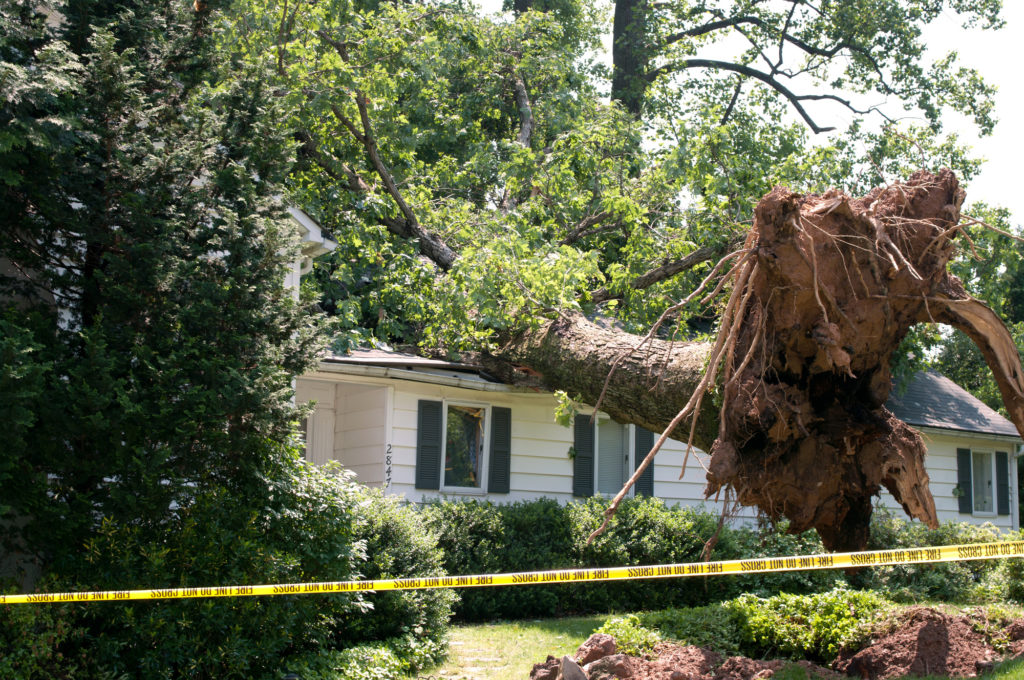
Do you have mature trees in your yard? These are more dangerous than you think.
Mature trees can decrease the value of your home but can also make your home more dangerous. A tree can fall down, attract diseases, and result in other dangerous occurrences.
On the other hand, healthy trees mark a positive influence on your home. They make your yard look lush, they provide shade, and make all other plants healthier.
But all trees look the same, right? It’s difficult to know the difference between a good and a bad tree. Here’s how to identify falling trees and other tree hazards and what to do when you have a dangerous tree.
Examples of Dangerous Trees
Before you do something about your dangerous trees, you need to ensure they’re truly damaging to your yard. You don’t have to be a tree expert to figure it out. Read on and know the common signs of dangerous and mature trees.
A Leaning Tree
Trees lean — it’s normal. Contrary to popular belief, trees don’t grow in a straight line. All trees will naturally lean a little bit. But this is why this issue is commonly overlooked.
If your tree looks like the Leaning Tower of Pisa, there’s an issue. This is usually because of root damage which causes uneven weight distribution. You might be able to see the roots sticking out.
Multiple Trunks
Trees should ideally have one tree trunk. But it’s common for mature trees to have multiple trunks.
Technically, these aren’t different trunks. They’re the same trunk but they have the effect of multiple trunks.
What happens is the trunk’s strength decreases. The trunk starts to split. This happens with age but can also happen after a severe storm.
Look for V-shaped or U-shaped splits. You should also look for cracks that deeply penetrate the tree.
Injuries
The first sign your tree is damaged is seeing visible injuries. Trees have a strong trunk, body, and foliage. Any change in that is a sign the tree has to do.
First, look at the trunk. Look for wood that’s brittle and dehydrated. This means the tree isn’t receiving enough water. When a tree is injured, it can’t hold on to moisture the same way a healthy tree can.
Then, check the foliage. Look and see if the foliage decreased in size. You might be able to see fallen leaves and branches around the tree.
Causes of Tree Damage
So, you have a mature or damaged tree. What caused it? There are many different causes. Some are natural and others are man-made. Knowing common tree damage causes will help you prepare in the future.
Construction Stress
Unsurprisingly, man-made stress affects your tree. Specifically, construction. Whenever you endure a new renovation project or are doing any construction on your house, expect that to take a toll on your trees.
After you have any work done on your home, make sure you inspect your trees. Projects that do the most damage include installing a new driveway, adding anything to your home (a patio, etc.), and even digging up utility lines.
Other than the fact that construction work damages the tree’s home, other factors play into tree damage. Construction equipment can scrape and penetrate a tree trunk. This can open the tree up to disease and infestation.
If you recently did some construction, look for these signs on your trees:
- Damaged bark
- Reduced foliage
- Loss of foliage
- Brown or red coloring
- Mushrooms and carpenter ants
These are the first signs your construction project damaged your tree.
Lightning
Your tree can also be a victim of lightning. This is pretty rare and you’re only at risk if you live on top of a hill. If you do live on a hill, make it a point to check your tree after each storm.
Lightning can easily strike your tree’s trunk. But trees are strong against mother nature’s damages. Lightning may strike a tree without doing any damage. But that’s only if the lightning didn’t fully penetrate the tree’s trunk.
What if the lightning strike did some serious damage to the tree? The roots will be damaged. Worst case scenario, the lightning strike can even make the tree trunk explode!
When identifying your tree of lightning damage, always look at the trunk. There will be visible signs the lightning penetrated the tree trunk. There may also be root damage.
Storm and High Winds
Even if the storm didn’t receive any lightning, a storm can still damage a tree. High winds can obliterate any weak tree and the rain can weaken the soil underneath the tree.
During a storm, high winds will likely cause falling leaves. But aged trees can also lose several branches.
In severe conditions, a storm is the catalyst of a falling tree. This happens when saturated soil weakens the tree’s roots, causing the tree to fall.
What Now?
If you notice your tree is damaged, you can do a combination of DIY and professional tasks.
DIY
Simple DIY maintenance can help identify and treat aged or damaged trees.
First, always get in the habit of inspecting your trees. Take a look at all sides, walk up close and walk far away. Cuts, peeling bark, and foliage loss are the first signs that something is wrong.
During dry seasons, always water the soil around your tree. After a storm, check and make sure the soil isn’t overly saturated.
If your tree is weak, you don’t have to cut it down immediately. Trim the branches so it’s not holding as much weight. If you’re a handy person, brace the tree up with cables.
Professional
When in doubt, always call an arborist. Your best bet is calling one before a storm or before you plan on doing any construction. They will identify your tree and will inform you of any actions they must take.
If a tree needs to be cut down, never do this yourself. Always call a professional. Even small trees should be removed by a trained arborist. Read more here.
Prevent Falling Trees and Other Disasters
Falling trees and other tree hazards can damage your home more than you think.
To protect your home and your family, always keep an eye on your trees. Identify any signs of aging. Check your trees before and after certain events such as storms and construction.
For more useful home and garden tips, visit our blog.

